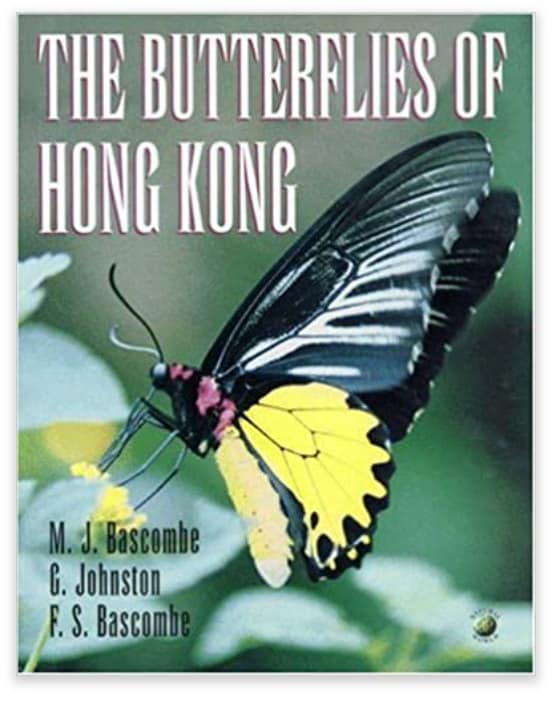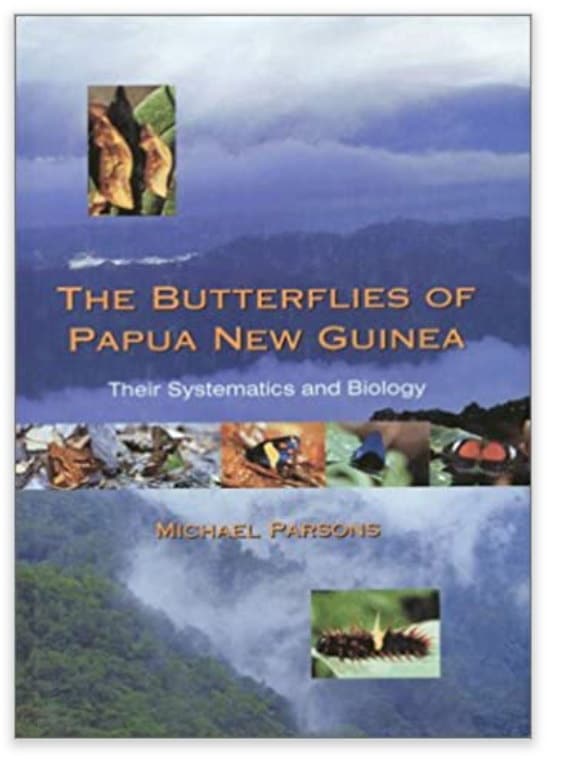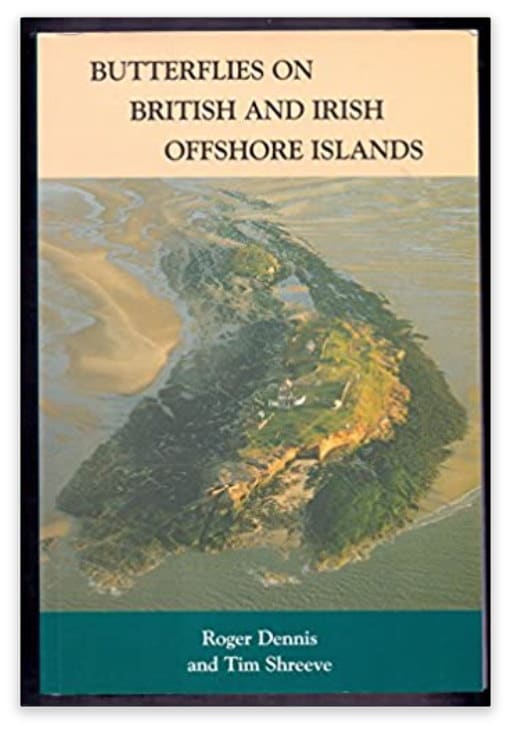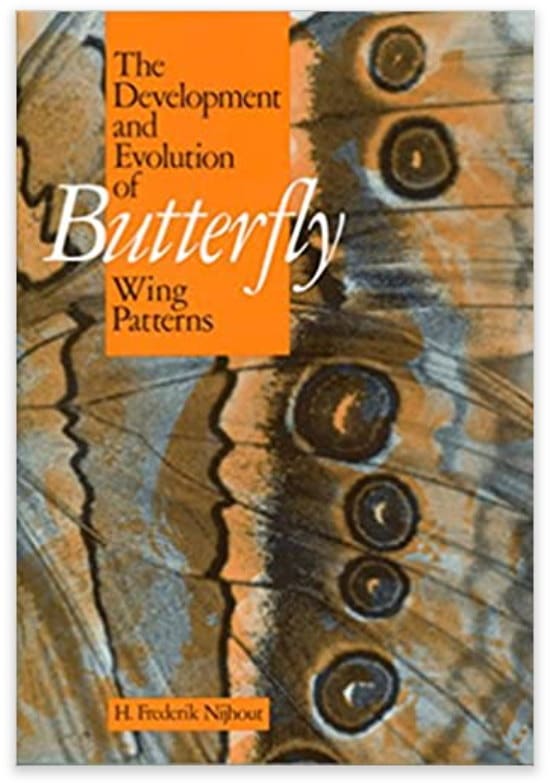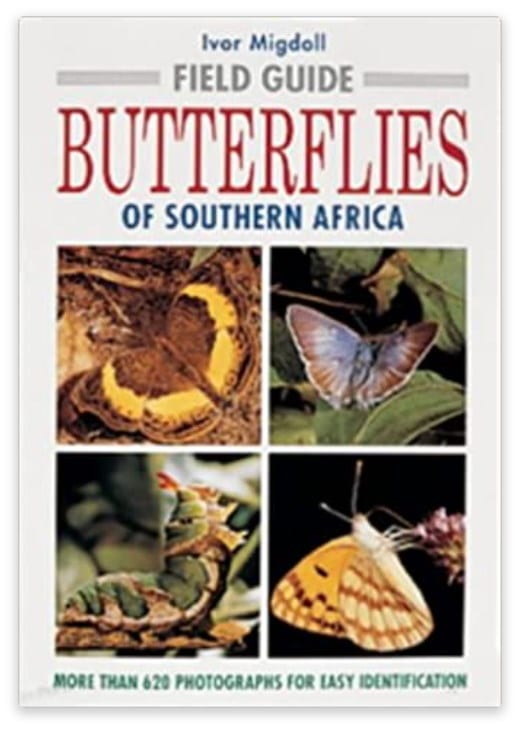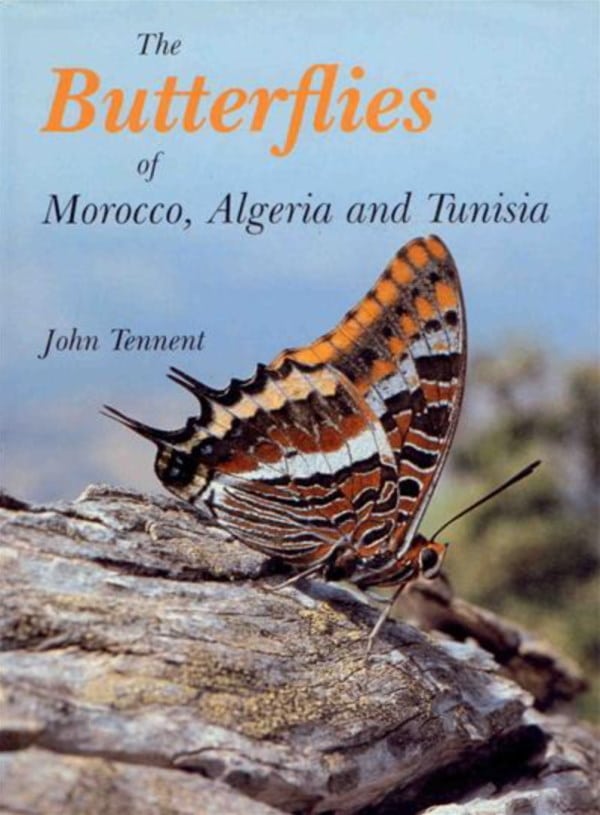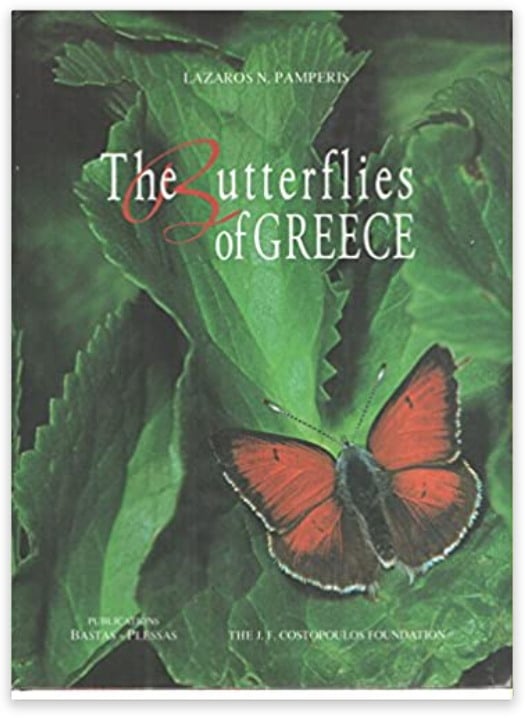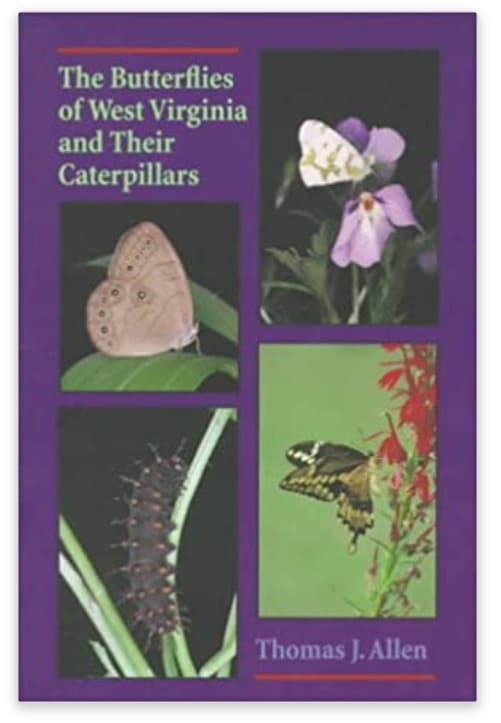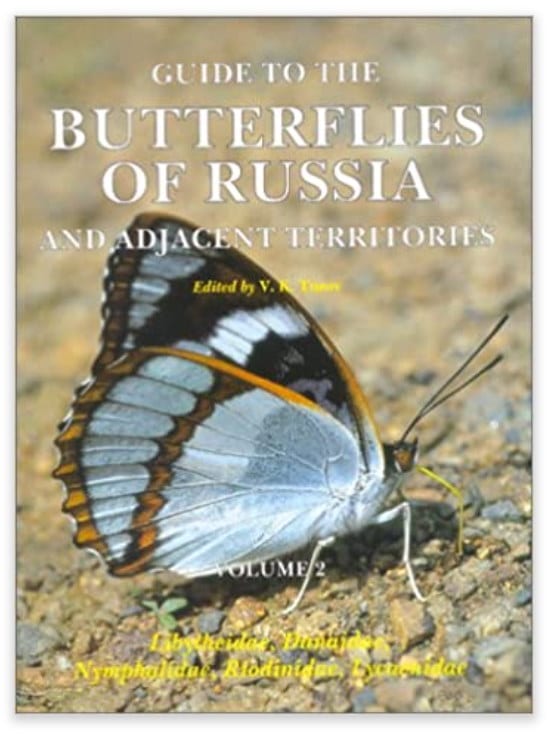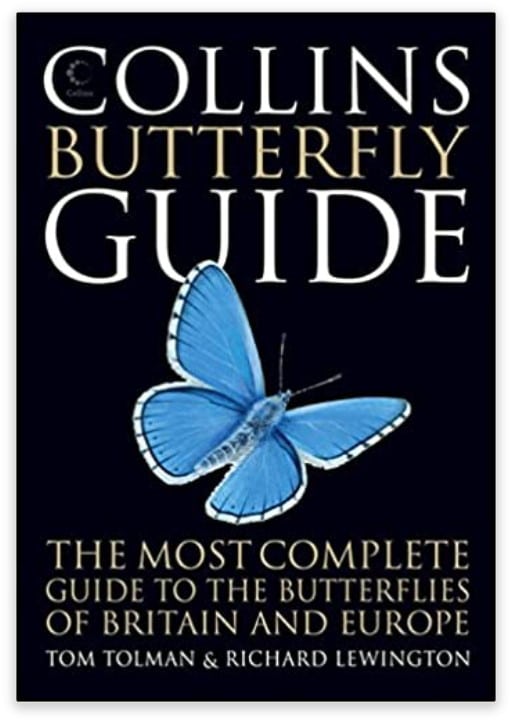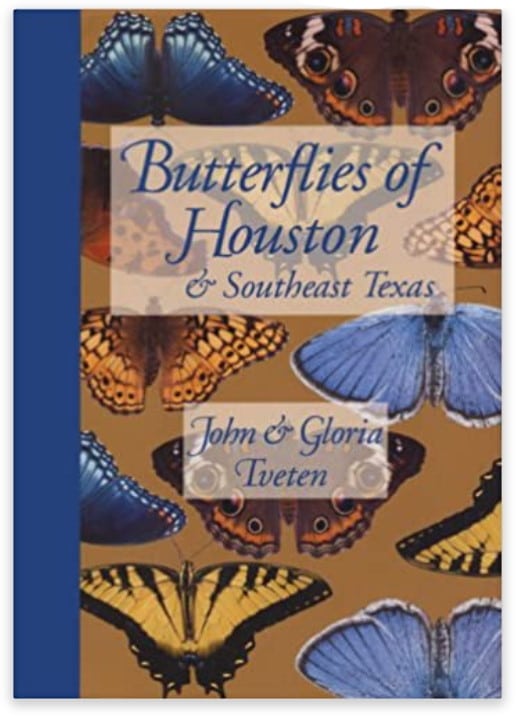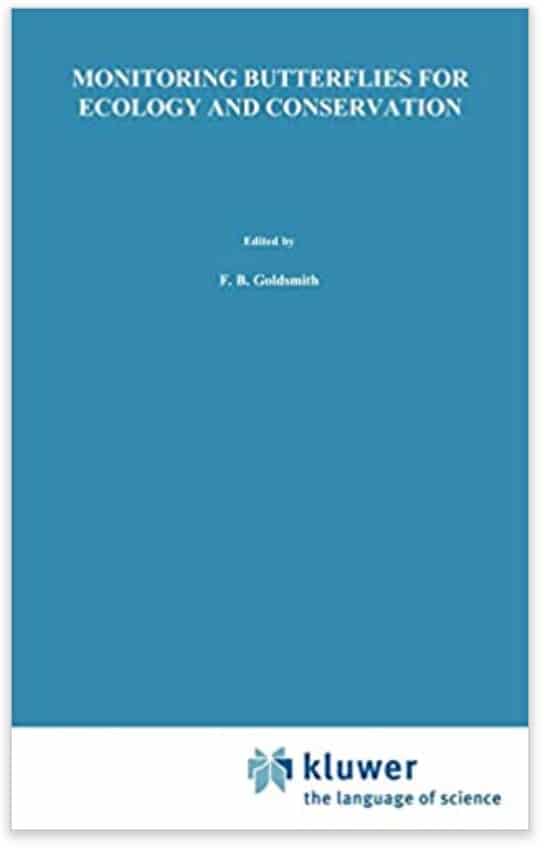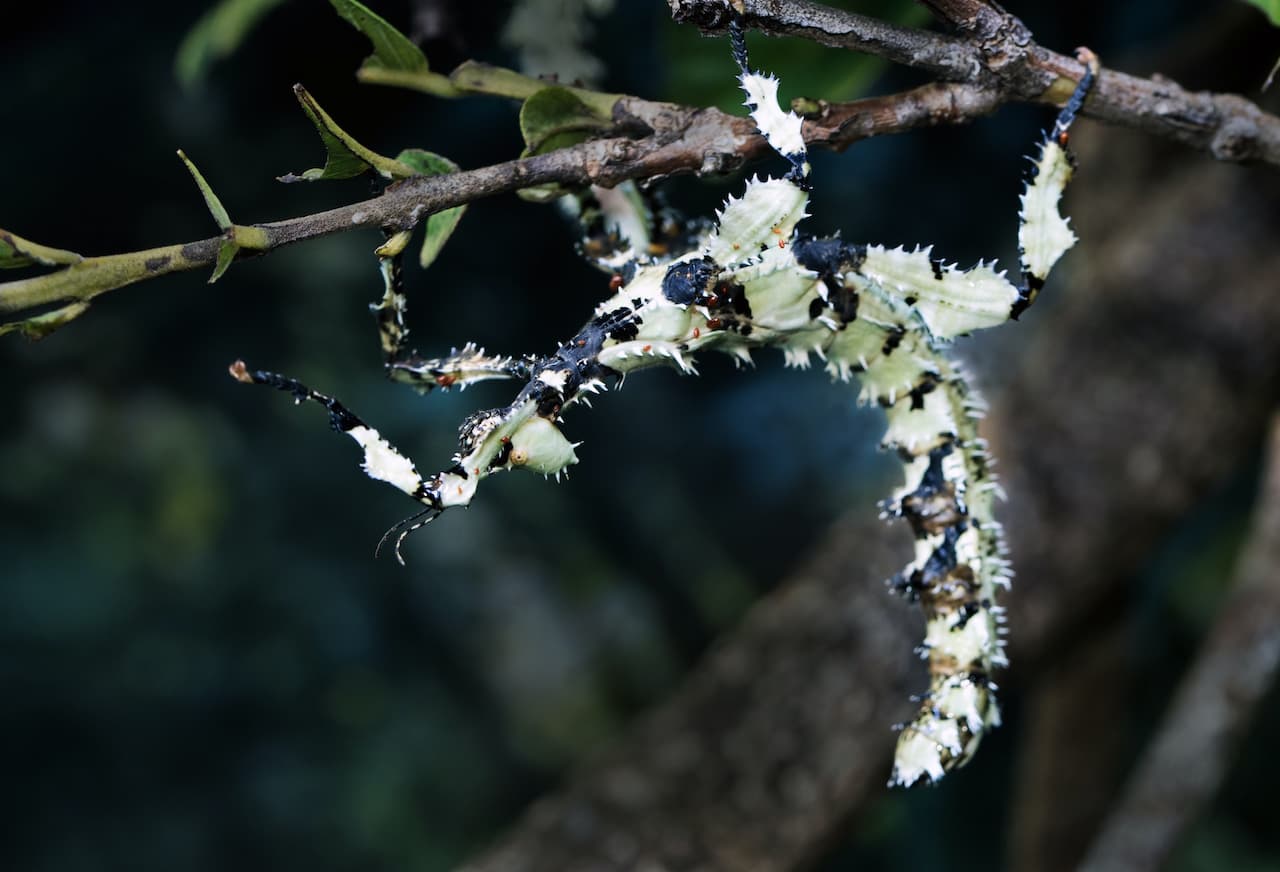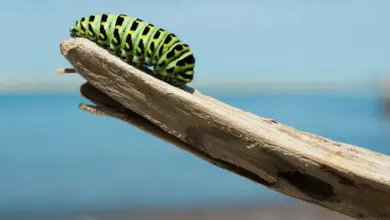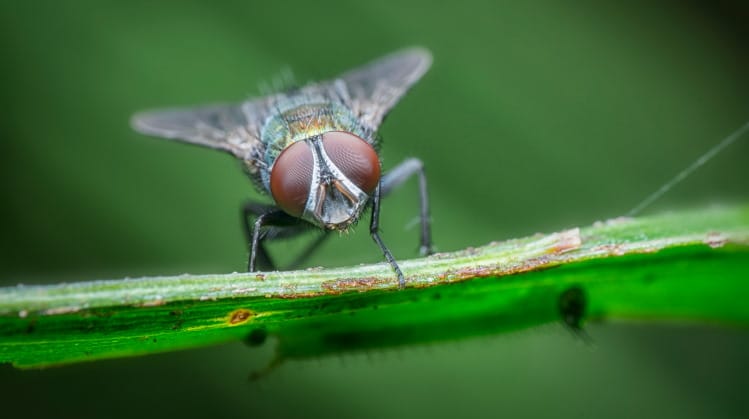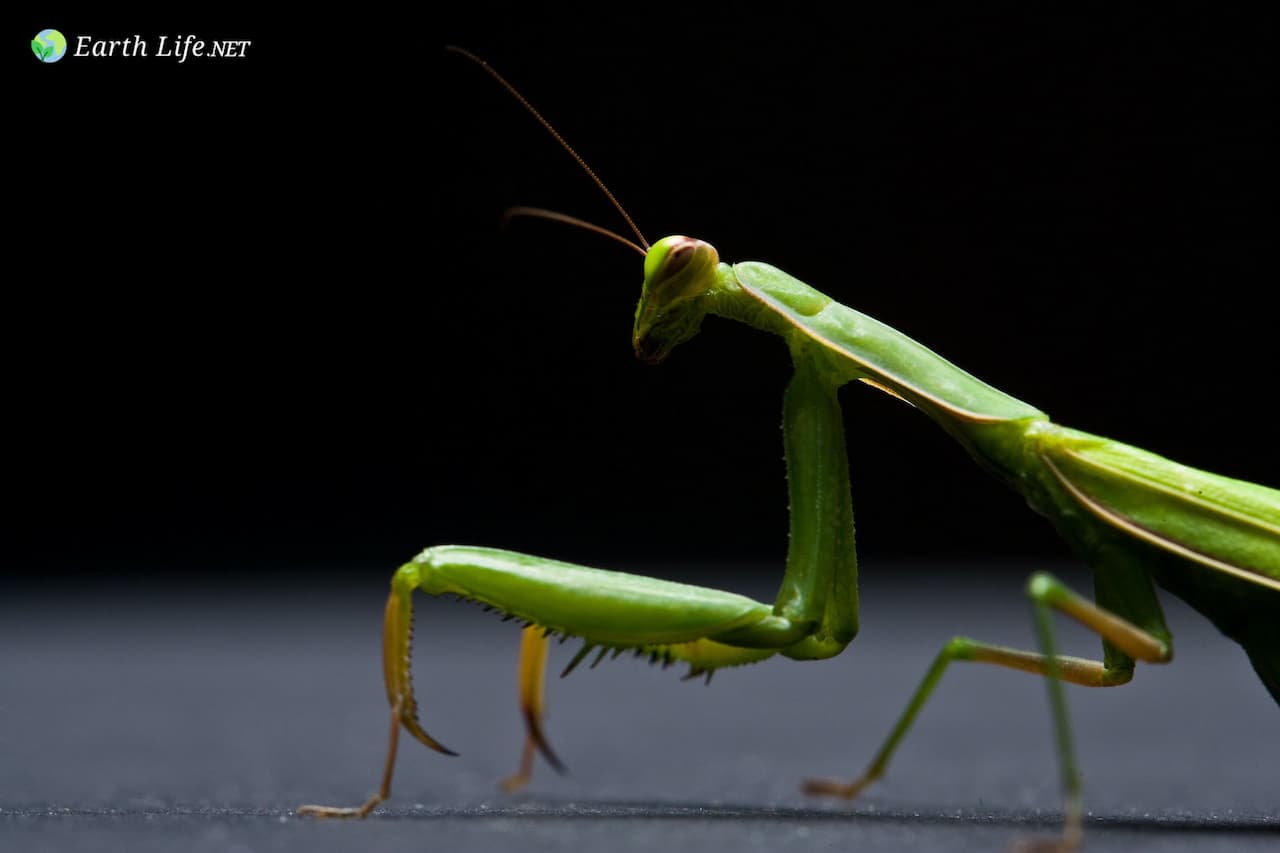13 Best Books About Butterflies (That I’ve Actually Read)
Looking for books about butterflies?
Well you’ve come to the right place. These 13 butterfly books will surely help your studies, whether you’re a beginner, a student or a hard core lepidopterist.
Just tap the title or the picture of each book to see the individual reviews on Amazon.
Butterflies of Europe
by Tristan Lafranchis
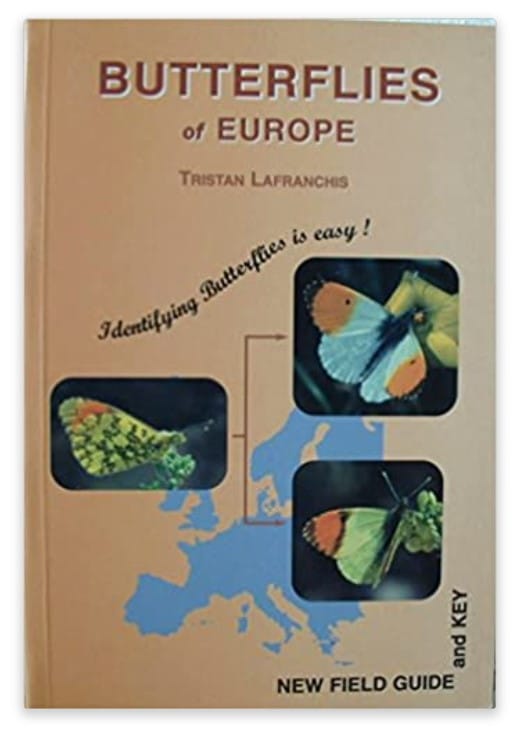
It was quite a pleasure to receive my copy of the latest guide to the Butterflies of Europe. This one is by Tristan Lafranchis and is unusual in that it also is a key. Keys are something I am quite familiar, for insects such as beetles, flies, bees and grasshoppers, but this is the first one that I have had for European Butterflies.
It is paperback and will fit into the pockets of my army surplus trousers so if I am not interested in taking my rucksack off every time I want to consult it there is no problem there. Getting inside it I found it to be well produced. Yes it really is a key and quite a usable one at that. It is very well illustrated by a mixture of photos from both the field and lab.
1,300 photos to cover about 400 species allows for good coverage and the photos are clear. Furthermore for problem groups such as the various Hipparchia species the photo key is augmented by a genitalia key. The authors explain a method of examining the genitalia of males of the medium to large species without killing the butterfly. In fact the authors dedication to removing the necessity for butterfly deaths is quite laudable and I hope their attitude will prove more acceptable as time progresses.
The book has two advantages over the Collins guide that I habitually use, the first of these is that the distribution maps are located with the keys, descriptions and species photos. The second is that the pages are coloured for a section on the leading edge in a way that codes for the species groups. This is a great convenience in allowing you to get to the blues of browns quickly as you can see which section of the book they are in before you open it.
Naturally enough, as I received my copy on 6th of February and the temperature has hovered around 2C all day for the last two weeks there have been few opportunities for me to test the book on live specimens, however I did have a few troublesome specimens left over from last summer, now spread and set but a test anyway. I found the keys work well, but that, as the author says, they fall short of some of the variations.
All told if you are looking for a butterfly book to get you started on the butterflies of Europe this will do the job well, and if you are familiar with the common species already and looking to extend your expertise then this book will also serve your purposes well.
Highly Recommended
The Butterflies of Hong Kong
By M. J. Bascombe, G. Johnston and F. S. Bascombe.
What is there really to say – it’s brilliant.
Hong Kong is a relatively small area of land and to have a book of this magnitude dedicated to its 219 species of butterflies is an abundance of riches. The book contain 422 pages as well as 222 A4 colour plates – over a page per species. If this wasn’t enough, all the text sections of the book are liberally dotted with colour figures as well as numerous b/w illustrations. This is an encyclopedic work, a continuation of a trend of the last decade to produce butterfly regional fauna of greater and greater completeness and beauty. Though lacking some of the artistic spirit of Butterflies of Tunisia and Morocco, this is still a magnificent work.
Part 1 contains 4 chapters. The first is a 12-page introduction to Hong Kong, its biogeography with specific reference to butterfly habitats. Chapter 2 continues this theme looking particularly at butterflies, their habitats and distribution within Hong Kong. Chapter 3, a 44 page introduction to the biology of butterflies, is excellently illustrated with many fine photos and diagrams. Chapter 4 introduces the topics of classification and nomenclature.
Part 2 is the species notes and obviously occupies the bulk of the book. It takes 300 A4 pages to deal with 219 species, some indication of the amount of information supplied on each species. The addition of numerous colour figures of adults and some juvenile stages throughout this section is a pleasant addition to a butterfly book of this form which also contains a set of plates. This section also contains keys and genitalia drawings which should enable any species from the area to be identified.
The colour plates are excellently produced, the adults are dealt with in the first 86 plates, leaving 136 plates dedicated to juvenile stages a luxury of colour. The book contain 6 appendices: i) Checklist and arrangement of species; ii) Miscellaneous species; iii) Adult food sources and other attractants in Hong Kong; iv) A list of known parasitoids in Hong Kong; v) Rearing and recording immature stages in Hong Kong; vi) A small selection of useful books and addresses.
Finally there are 8 pages of references and two indexes, one to butterflies and one to technical terms.
All in all this is one of the most complete regional faunas for butterflies I have ever seen. Well worth the money for anyone planning more than a cursory look at the Butterflies of Hong Kong.
The Butterflies of Papua New Guinea Their systematics and Biology
By Michael Parsons
It seems to me that these regional butterfly books just keep getting bigger. Last year saw two quite large book added to the lepidoptera shelf, “Butterflies of Greece” and “Butterflies of Russia”. The Butterflies of Papua New Guinea is however nearly equal to both of these together. Including the plates this work is a massive 900 A4 pages and should only be placed on sturdy tables.
Part of the reason for this size is the inclusion by the author of a very comprehensive introduction to both butterflies and the fauna of PNG. The other reason is the shear number of species involved. PNG has a butterfly fauna amounting to some 820+ species and they are all covered by this work. A preferable situation I think than having several seperate but smaller volumes which come out with years in between them. Also this completness makes the book better value for money, in terms of butterflies per pound, than its £185.00 would at first seem.
The introduction, as I have already said, is extensive. It is infact a complete textbook on butterfly ecology with special reference to PNG and contains all the information you could ask for either as a butterfly novice or a tyro. The bulk of the work is the systematic section which occupies 508 pages and contains the species accounts for the 820+ mainland PNG. Though I am by no means an expert on the PNG butterfly this systematic section is also extensive, containing good introductions to family and genus as well as supplying all the usual information on species. In many cases additional notes give useful extra information on taxonomic changes and collecting history.
The colour plates are as good as any I have seen, and better than some, illustrating 3000+ specimens without any of the plates looking unpleasantly crowded. As well as the standard plates there are 32 plates of colour photos, mostly of immature stages which add pleasantly to an already fine work. There are a few distribution maps thoughnot many and if this work could have been improved it is in the inclusion of more of these. The addition of 22 B/W plates of genitalia, 11 appendices and a 38 bibliography complete this work as a scientific treatise.
Contains the following chapters:- Scope and Format of the Book; New Guinea Past and Present; World Faunal Regions and Butterfly Diversity; Origins and Composition of the New Guinea Fauna; A History of Butterfly Collecting in New Guinea; Butterfly Conservation and Commerce in Papua New Guinea; Aspects of Butterfly Ecology in Papua New Guinea; Mimicry in New Guinea Butterflys; Collection and Study; Adult Structure; Classification and Nomenclature; Superfamily Hesperioidea; Superfamily Papilionoidea; Family Pieridae; Family Lycaenidae; Family Nymphalidae; Keys to PNG species for difficult groups; Appendices; Bibliography; Glossary; Index.
All in all a magnificent effort that will grace any academic or collectors library. Highly Recommended
Butterflies on British and Irish Offshore Islands
by Roger Dennis and Tim Shreeve
This is a book about ecology not identification, the species occurring on the islands concerned can easily be identified with one of the many guides to the butterflies of Britain and Europe. There are 219 islands large enough to maintain a butterfly population around the UK, though they all have reduced species diversity, mostly less than 30 species. Many have not been competently surveyed and in this work data from only 75 of them is used for the statistical analyses.
In this book Roger Dennis follows on from a few chapters he has previously contributed to other works to produce a scholarly statistical based analysis of the zoogeography of the occurred of species on island habitats around the British Isles. The book starts with a section on the ecology of butterflies on islands. From here it moves rapidly onto an introduction to the statistical methods used before going on to discuss species richness on islands and butterfly associations. The authors use the data from their analyses of the 75 well surveyed islands to predict species richness on the remaining60 odd islands. The work then moves on to Tim Shreeve’s area of expertise and discusses migration and colonisation.
The 2nd part of the book is a compendium of records for British and Irish islands and a plea for more up-to-date records. This butterfly book is not a light read, and will I think be appreciated more by professional ecologists and university students than by lay persons with an interest in butterflies.
Highly Recommended
The Development and Evolution of Butterfly Wing Patterns
by H. Frederik Nijhout
That the bewildering diversity of colour and pattern perceivable in any regional guide to butterflies can be reduced to a series of elements, cohesive units whose homologies can be traced across nearly all species is surprising. However after reading this book you will understand how this is true and you will see butterflies with new and more perceptive eyes.
Starting with an introduction to the material basis for wing colouration and wing development the author leads you on through a series of well illustrated steps on a journey of amazing discovery. After describing what is present, or potentially present the author goes on to explain how to interpret existing patterns in relationship to the fundamental ground plan. He then describes some supportive experiments before going on to deal with the genetics behind the observed patterns. Finally he takes a look at model systems and evolutionary processes.
Contains chapters on: The Material Basis of Wing Colour Patterns; Pattern Elements and Homologies; The analysis of Wing Patterns; Exploring Pattern Morphospace; Experimental Studies on Colour Pattern Formation; Genetics, Mimicry and Polyphenisms; Models and Mechanisms; Evolution of a Process; Appendix A: Classification and Systematics of Butterflies; Appendix B: Higher Classification of the Nymphalidae; Appendix C: Genera Surveyed for Figures 2.19 and 2.21; Bibliography; Index.
This is an unusual and scholarly work of considerable depth which will be of intense interest to both Lepidopterists and Anatomists in general. The author is an internationally acclaimed expert in this field who has written in this book a very comprehensive treatise on morphological evolution as it relates to butterfly wing patterns. A very valuable resource for any academic library at the very least
Recommended
Field Guide: Butterflies of Southern Africa
by Ivor Migdoll
This is designed as a pocket field guide to the commoner butterflies of Southern Africa. It is obviously not a complete identification guide as only 232 of the 800+ species found in the area are illustrated. As far as I know it is the only work on the butterflies of this area currently in print, for this reason it is a useful work. Also the photos of live specimens are excellent something that improves its value.
However because it illustrates such a small percentage of the fauna it will be useless as a means of generating records, one of its intended aims, as the user will be unable to assess what other species the specimen could be that are similar. This will apply particularly to the Lycaenids and the Hesperids. Another shortfall is that the images are not labelled with the appropriate page numbers so that the user can look up the relevent text, instead you have to go to the index to find the correct page. The images are instead given numbers that you can back reference to from the text.
The introductory section includes a good amount of information necessary to get a amateur started on making their own collection, including making equipment such as a net, setting boards, and cabinet. Surprisingly no addresses are given for suppliers of commercial equipment. The introduction also includes information on the biology and classification of butterflies as well as on techniques for collecting and breeding. The species accounts include information on ID, wing lengths (important as the illustrations are not life size in most cases and are not scaled), common names, flight times larval food plants and distribution, as indicated on a small map.
I think, that as with any guide of this sort (one that does include all the species likely to be encountered), that this butterfly book is aimed at the casual nature observer or the interested gardener. Anyone seriously interested in identifying butterflies from Southern Africa will soon find species which are not included in this work and will need to acquire a more complete work
The Butterflies of Morocco, Algeria and Tunisia
by John Tennent
This butterfly book is a work of art. It is also a work of science. I was pleasantly surprised by the presence of it and by the fact that a little space has been allowed to creep in here and there. So many modern regional butterfly books have everything crammed in and show very little style, a little openness makes for far pleasanter reading. This book also contains a number of little extras such as the frontispiece which shows some specimens from Linnaeus’s collection sent him by Erik Bander. These specimens are now locked away for posterity in a specially built strong room at the Linnaean Society headquarters in London. For many people this will be their first chance to see these specimens figured.
A page illustrating wing notation and another listing abbreviations lead to the introduction which is mostly concerned with the history of collecting in the Maghreb states. The following section is concerned with habitats and is brought to life by 19 beautiful scenic photos, there is no text with these photos but such is the eloquence that none is needed.
This is followed by a checklist of species and a page explaining the International Code of Nomenclature and the nomenclatural decisions made by the author during the compilation of this work. He has chosen to tread a middle path which inevitably will annoy some but may please many in its simple wisdom. In the main body of the work each species is described, variations noted and information supplied as to its habitat, flight times, larval food plant, range, and distribution within the Maghreb states.
The plates are preceded by a glossary, a gazatteer and a list of host plants by family alphabetically. The 175 species figured are illustrated in 32 plates depicting nearly 1 500 specimens, allowing for a lot of variations to be covered. This book is also enhanced by a midpiece of 6 pages of very beautiful colour photos of butterflies in the wild. The work ends with a bibliography of more than 600 references, a list of journal name abbreviations, as used in the bibliography, and an index (of butterfly name only).
All in all this is the most stylish and beautiful of all the regional butterfly works I have reviewed, combining the beautiful photography of the “Butterflies of Greece” with the technical wisdom of the “Butterflies of Russia” and enhancing the result with its own special artistry. Well done John Tennent.
Highly Recommended (Would make a beautiful present)
The Butterflies of Greece
by Lazaros N. Pamperis
We are told that the author has spent 14 years studying the 232 species of butterfly that regularly occur in Greece. He has taken all 1174 photos himself while working in 1169 different localities. This massive work is obviously a labour of love.
These days modern regional works on butterflies tend to follow a general formula; i.e. a brief introduction to butterfly biology, a series of species descriptions and a collection of plates of set specimens or half specimens at the end. This work is an interesting deviation from this formula in that the book is based on photographs of live specimens. This gives the book an added dimension of beauty. T
here is no doubt that this butterfly book with its wonderful colour photos on nearly every page is far more visually attractive than most comparable works. However for those primarily interested in identification having to turn several pages to compare similar species will be annoying, and I suspect some will find identifying from the photos more difficult than from conventional plates. It is a large world though and I think a little variation now and then is healthy.
Nearly every species has two pages devoted to it, mostly comprised of photographs. The text includes a morphological description of the adult and notes on similar species, flight period, distribution, ecology and status. Surprisingly, apart from the occasional photo, no mention is made of the larvae or their food plants, though for some species, particularly the common Nymphalids, mention is made of where the females lay their eggs. This is a major break from tradition that will inevitably annoy many readers.
An interesting addition is a little bar graph for each species indicating the number of localities, sorted by geographical altitude, from which it has been recorded. From this we can see that the two rarest species in Greece are Maniola halicarnassus and Zizeeria karsandra both of which are only known from a single location, and that the commonest species is Polyommatus icarus which occurs in 402 localities ranging from 0 to 2,600 feet in altitude.
Scattered here and there are a number of beautiful photos of scenery and some lovely lilies. All in all this is a very lovely if unusual book which I expect every lepidopterist in Europe will want to own. I am certainly pleased to have my copy. The fact that the author insists on referring to Maniola jurtina as Maniola jurdina on every occasion will I hope not cause any trouble to anyone, it could just be a typo that has manifested throughout. There are other taxonomic variables that are more a result of a failure of the lepidopterist world to fully agree on some matters of classification, however it should be remembered that names change.
Highly Recommended
The Butterflies of West Virginia and Their Caterpillars
by Thomas J. Allen
This work describes and illustrates the 128 species of butterfly that you are likely to find in West Virginia. The plates are standard set specimens for the adults and live photos for the larvae. The first 33 pages are the introduction. This starts with a description of the topography of the state detailing the environmental forces which govern the diversity of habitats making up West Virginia. The next section explains the format of the guide, this is followed by an introduction to butterfly biology including morphology and life cycles. After this there is a short chapter on studying butterflies and another on bringing butterflies into your garden which includes several useful lists of plants.
On page 34 the real work of the guide begins with a key to families and subfamilies of the species covered in this work. This is followed by the species accounts which are more than adequate giving information on: Description; Distribution; Habitat; Life history; Nectar sources; and larval host plants.
The inclusion of the flight period information as part of the half page section on ‘Life history’ rather than under its own subheading is unusual but not really a problem once you are used to it. Each species report covers 1.3 to 1.5 pages and supply a good amount of information. The set specimens are nicely spaced on the plates, not crammed in, which is pleasant, the quality seemed to vary between plates but not drastically.
The thing that really makes this work, and several other US state compendiums, is the inclusion of larval photos for all the species covered. These are of excellent quality and well presented, and as if this wasn’t enough, the author has included photos of half (64) of the pupa as well. All in all this is a really attractive work which should be of great use to all the residents of West Virginia as well as to those in nearby states or planning to visit WV.
Highly Recommended
Guide to the butterflies of Russia and adjacent territories
Volume 1: Hesperiidae, Papilionidae, Pieridae, Satyridae
by P. V. Bogdanov, A. L. Devyatkin, L. V. Kabak, V. A. Korolev, V. S. Murzin, G. D. Samodurov, E. A. Tarasov, and V. K. Tuzov
A unique, long-needed, full-colour edition devoted to a relatively popular, guide-like assessment of four most beautiful butterfly families in the scope of the fauna of the entire former Soviet Union (FSU). A historical review is provided of lepidopterological research and of some of its key figures in Russia, dating back to the early 18th century.
Altogether. Over 400 butterfly species or subspecies, including four Central Asian species new to science, are documented from the FSU, each supplied with a brief account of its taxonomy, status, ecology, biology, variability, and distribution. Virtually each taxon is illustrated by 1:1 colour photographs of the male and female both from upperside and beneath, with several old and new type specimens involved. In the cases of sibling/similar forms, their genitalic distinguishing characters are depicted as well. Based on butterfly distribution patterns, a general zoogeographical division of the FSU is proposed.
In addition, several dozen beautiful photographs display a number of habitats/landscapes supporting some most interesting/picturesque butterflies in the FSU. Destined for professional and amateur entomologists, all lovers of butterflies and Nature.
All in all this is a very beautiful and useful book about butterflies and the quality of the production is superb.
Highly Recommended
Butterflies of Britain and Europe
text by Tom Tolman illustrated by Richard Lewington
With this new field guide Collins have excelled themselves, and this will be the definitive field guide to butterflies of Britain and Europe for many years to come. Following on from, and updating ‘Higgins and Riley’ it also benefits from the immaculate artistry of Richard Lewington, giving it a place of its own ahead of the field.
The plates are grouped together in the centre of the book, the accepted format these days and an improvement on ‘Higgins and Riley’, making finding the correct illustration far easier. The work illustrates and describes 440 species and numerous subspecies including over 2000 illustrations. The plates pass you quietly onto the text which is arranged in the following order:- Range; Distribution (text plus a small inset map); Description and Variation; Flight Period; Habitat; Life History.
The same textual information is also supplied for subspecies in most cases. The ‘Life History’ data is unfortunately often brief, and sometimes even LHP data is missing, reflecting the fact that even in this most studied group of insects information is often scarce.
All in all, the combination of Tom’s accurate data and Richard’s superb drawings make this simply the best field guide of its kind and a must for all lepidopterists and amateur entomologists in Europe (of which Britain is actually a part I believe).
An excellent work. Highly Recommended
Butterflies of Houston and Southeast Texas
by John and Gloria Tveten
Butterfly watching is in, at least that is what several American books have told me recently, so I suspect it is in, at least in America. It has been ‘in’ for some time in the UK, home of ‘Butterfly Conservation’ and the BRS and if that wasn’t enough to convince you that butterflies are sexy then consider that the first two issues of the new international ‘Journal of Insect Conservation’ have been devoted entirely to lepidoptera.
Still this is no bad thing, butterflies are ensigns for the insect world and anything that improves their popularity is a boon gained for insect conservation.
This excellent book by J and G. Tveten should certainly add to the ease and pleasure of butterfly watching in Houston and its surrounds. My shelves already contain a fair number of guides to butterflies of various parts of the world, and I must admit that up until now I have been wary of real life photos. This book however has convinced me that the problems I have encountered in the past a a result of poor quality photographs, and that if the photographs are good enough then using them works well.
One of the things that impressed me about this butterfly book was the inclusion of so many larval photographs. All to many butterfly guides deal only with the adult form, yet my experience teaches me that the general public are as interested in, and as fascinated by, the larval stages of lepidoptera as by the adult forms.
However the overriding impression of this butterfly book is one of space, perhaps a reflection of the American state from which it derives. None of the 100+ butterflies in this book has less than a page dedicated to it and some have as much as 3.5 pages. In comparison with most guides this is a luxury that can only be revelled in. If you are planning a holiday to S.E. Texas, or already live there but do not yet own a butterfly book, then this book should be high on your essential shopping list.
Includes a 15 page introduction to butterflies, a checklist of species, a list of ‘Butterfly Organisations and Journals’, a list of ‘Butterfly Houses and Gardens’ a bibliography, an index of ‘Larval and Nectar Plants’ and an index of ‘Butterfly Species’ including both Common and Scientific names.
Monitoring Butterflies for Ecology and Conservation
By E. Pollard & T. J. Yates
I thoroughly enjoyed reading this book. This is the story of the Butterfly Monitoring Scheme run out of Monks wood experimental research station in England.
Apart from it obvious scientific merit this book must come under the heading of ‘reading for pleasure ‘ for anyone interested in the natural history of Britain. Though it is concerned with the population ecology of British butterflies I hope this book will be read by wildlife ecologists all over the world, and that it will then stimulate similar research around the globe.
One of the messages to come out strongly from this book is that even in the most intensively studied non pest entomological fauna in the world (British butterflies) there is still an awful lot that we do not know. Another important message is that a lot of invaluable information can be collected and good science done as a result of a small amount of regular effort on a few peoples behalf, providing the effort is well thought out The butterfly monitoring scheme in the UK has, with the publication of this book set a precedent that can be imitated and therefore used to great benefit to mankind and the environment all across the world.
Anybody with the slightest interest in butterfly conservation really must make this essential reading. An excellent butterfly book .
Highly Recommended.
Final Thoughts
Well, I hope this page has been helpful to you! If you’re on a journey searching for text books, don’t forget to check out our list of the best entomology books.

